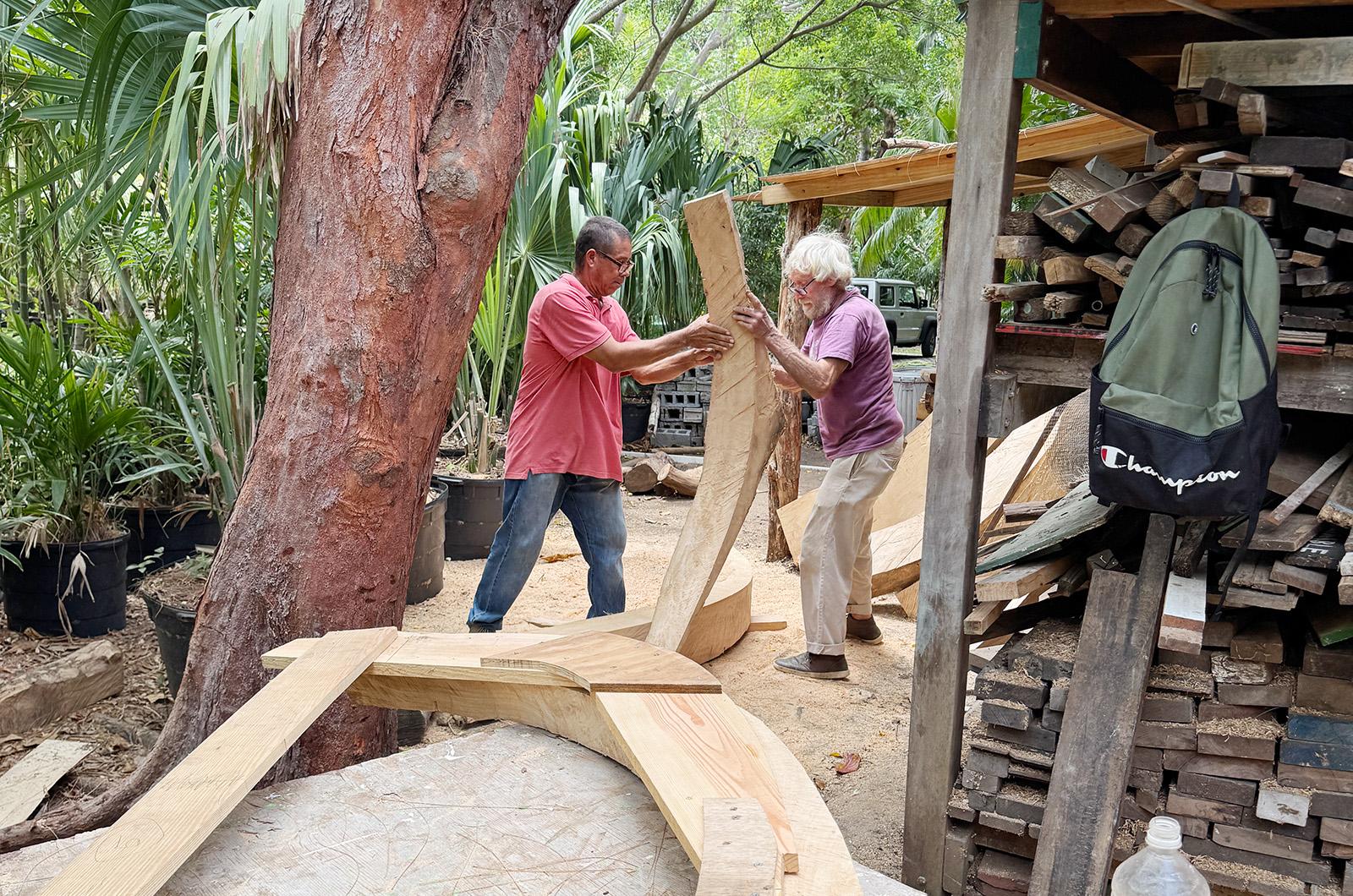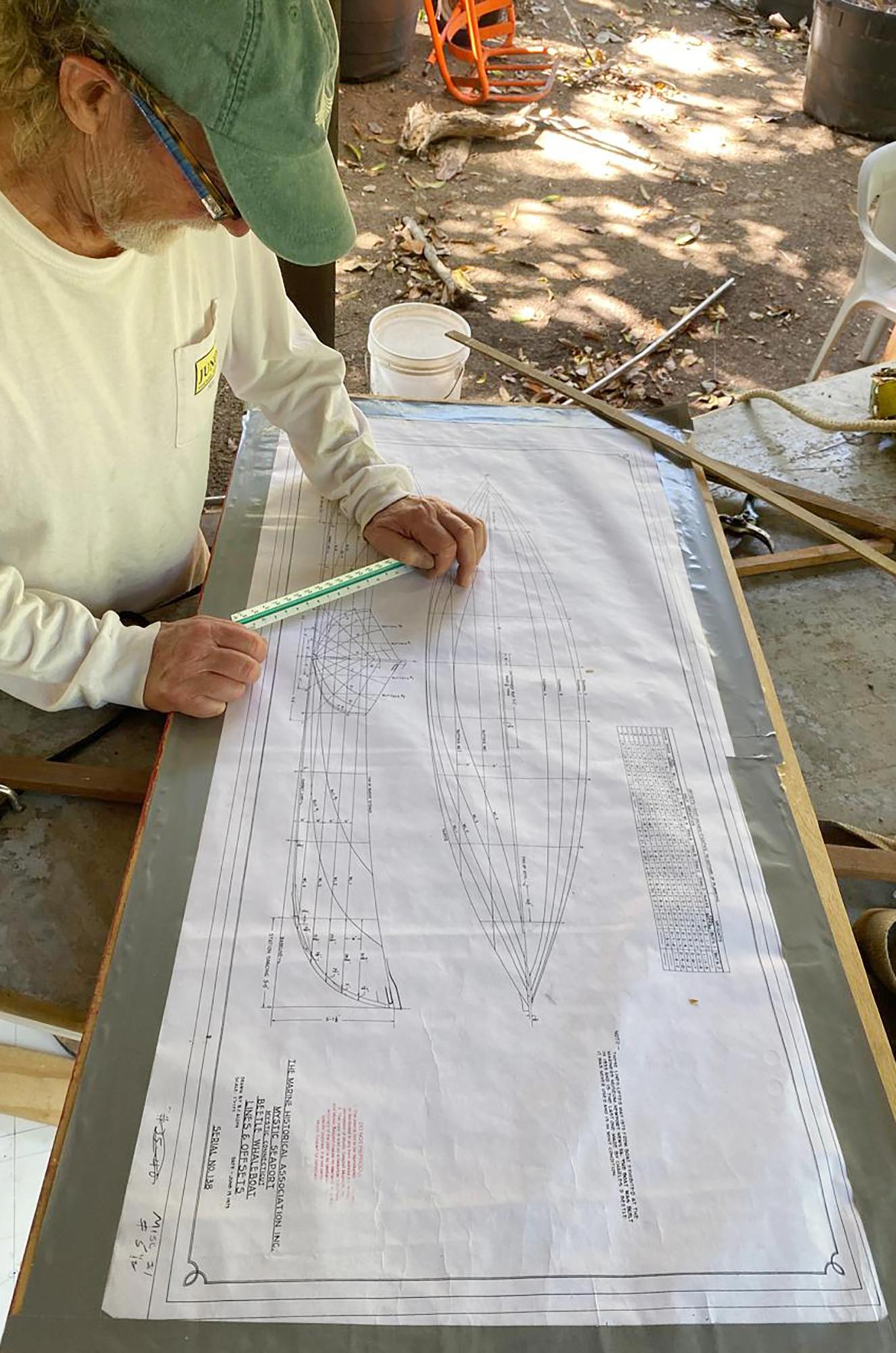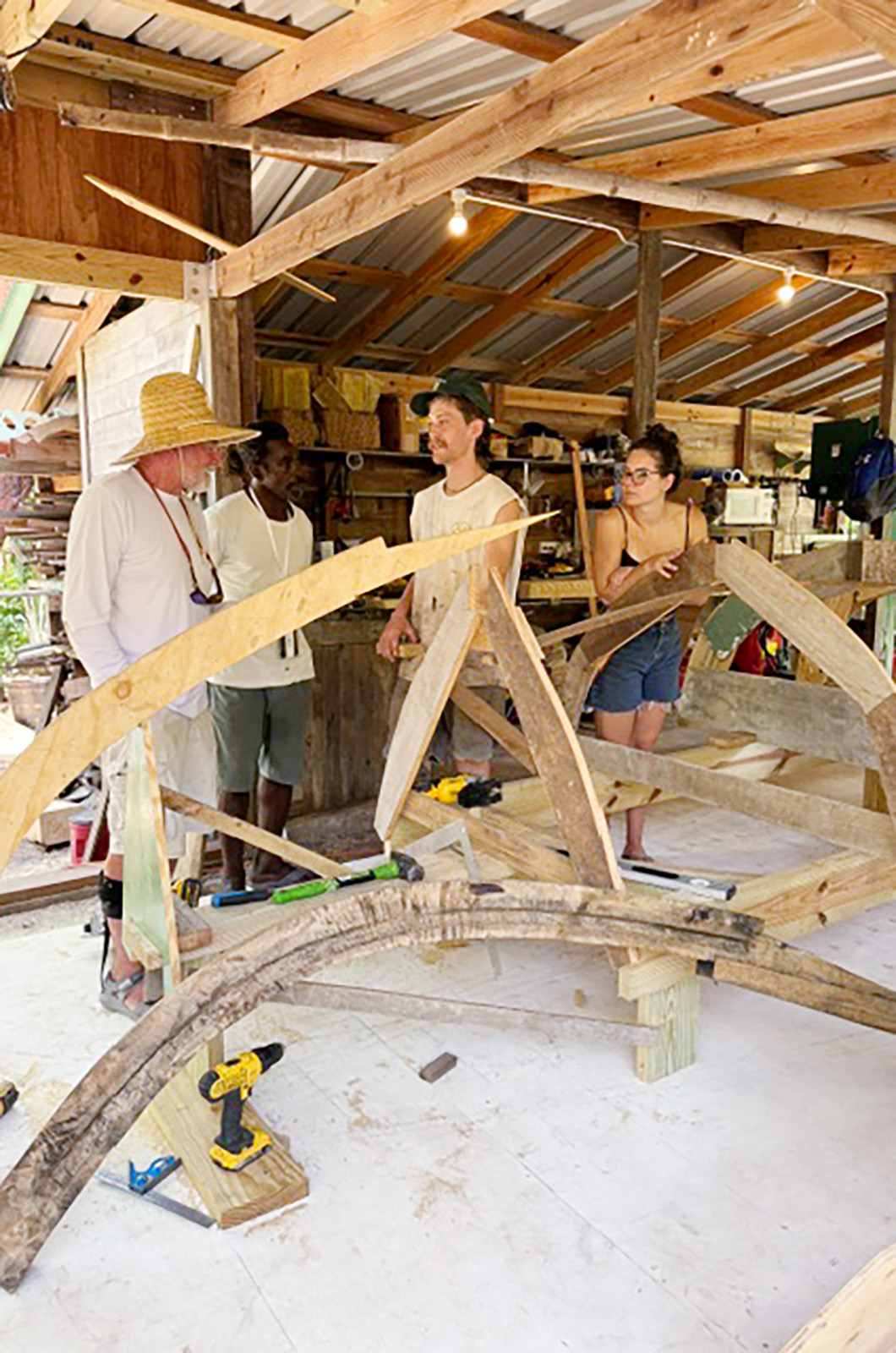When Jim Boos, a retired yacht captain living on Bequia, took it upon himself to help the community rebuild a historic whaleboat called the Iron Duke, he hired Ross Gannon and Nat Benjamin to fly down this winter with their families and a few tools and help get the local boatbuilders started.
“They had already built a shed and had a pile of crooks ready to make into parts and frames,” Ross said.
To equip the Charles W. Morgan when it was restored in 2013, Mystic Seaport Museum had commissioned the yard at Gannon & Benjamin to build one of the 28-foot whaleboats that are carried on her deck. That experience, along with more than three decades in a corner of the harbor in Vineyard Haven building boats from original designs and rebuilding wooden boats that were rotten, made Ross and Nat useful in Bequia.
“Pam and I went down before Ross to take the lines off the old boat,” Nat said of taking the trip with his wife.
When a boatbuilder mentions a boat’s lines they are talking about the measurements that describe a boat in three dimensions.
“The original boat had been rebuilt so many times that the lines we came up with were a sort of a compromise between the present Iron Duke and what we would kind of recognize as a whaleboat,” Nat said.
According to Bequia’s local history, the Iron Duke was purchased in the 1870s off the deck of a returning whaling ship by a Bequia crew member, an heir to a failed plantation named William Wallace Jr. In a dry, windy region with poor soil, where slave-fueled colonial sugar plantations were never successful, a shore-based whaling industry, however small, was a substantial contribution to the people that economy left behind. Whales offered well-being and independence.
“They ate the meat,” Ross said, “but they were able to export the whale-oil.”
While in Bequia, Nat finished transforming measurements from the old boat into a complete life-size drawing of the compromise-boat, laid out on the floor of the shed. He also found enough time to start cutting out both the fore and aft stems.
Carlos Mitchell, a master boatbuilder from Bequia, worked alongside Nat and Ross.
“Carlos had never cut out a rabbet on a bench before,” Nat said. “They usually just set the timbers upright in the boat and cut all the rabbets in place. He was kind of annoyed at first... but I think he liked it.”
On remote islands, boats are empowering. Resources that are limited inside the borders of an island’s shores expand profoundly with access to diverse areas to fish and trade. On Bequia, the skills of boatbuilders are treasured and refined, generation to generation.
“Carlos comes from a prominent boatbuilding family there and has been building boats his whole life,” Ross said. “But he had never really used a bandsaw.”
What he could do without heavy electric tools surprised Ross.
“Carlos would cut out a frame just with a hatchet,” Ross said. “He’d take one of the timbers (limbs of the local cedar tree, downed in the last hurricane that had grown into parts similar to the shapes of the boat’s parts) quickly parallel two sides and cut out the shape of the frame, by eye, before he offered it up to the boat. The whole thing would take him 10 minutes.”
Traveling with Ross were his wife, Kirsten Gannon, his son, Olin, and his son’s partner, Salyn Yancey. In just a few weeks, the group, along with the Bequia crew, were able to cut out a keel and enough frames to see the shape of the boat, upside down on a set of purpose-built molds. They were only there for a few weeks.
Olin had also managed to get a bandsaw working, giving Carlos and the crew of local boatbuilders a new way of working.
“By the time we left, Carlos liked that bandsaw,” Ross said.
“They are going to finish it themselves,” Ross added. “It’s their turn to do the rest of the boat their way... I know I learned a lot.”









Comments (1)
Comments
Comment policy »